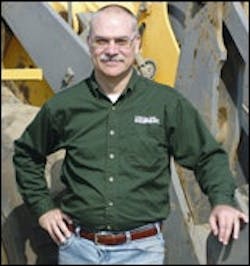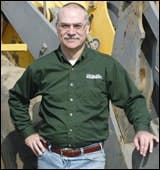Responsibility for the Gap
We've racked up more frequent flier miles traveling to new-product introductions this year than any in recent memory. Although home looks much better because of it, the activity has been exciting for folks who like iron as much as this staff does.
Although most machine changes have been predicated by emissions and engine design, two additional trends point to an even greater theme. Design engineers have incorporated notable improvements into cabs and serviceability, giving operator performance greater stature not only in terms of the productivity gained by keeping them comfortable and content, but also in terms of making the machines easier to service.
Many equipment manufacturers spent considerable time with customers in so-called "voice of the customer" sessions, which inevitably included cab comfort and serviceability. Implementing those improvements were as much in response to customer demand as they were designs to improve productivity.
Machine marketers are using the term "maintainability" to describe the ease with which service checks can be made and repairs can be accomplished. In fact, the Society of Automotive Engineers has a standard that manufacturers can use to measure it.
But as we discovered researching this standard, some would say a gap is developing between the level of machine technology and the ability of technicians to keep up with it.
There is little doubt that improper diagnostics result in "no-fault-found" repairs, although there is sufficient debate about the actual percentages of incidents where this happens. Simply put, technicians fix symptoms without addressing the underlying cause.
Training, of course, is an obvious response to this situation. It's incumbent upon end-users to maximize their training dollars and focus on technology whenever possible.
But OEMs and distributors must step up their efforts to communicate new machine technology and enhancements to the end-user. They've designed it, and they understand how it works in conjunction with machine performance. Both equipment managers and suppliers have work to do in order to close the maintainability gap, and both have much to lose if it's not. Scoring high in maintainability doesn't help the machine's user if he or she can't find and fix the problem indicated by an error message.
630-288-8130, [email protected]


